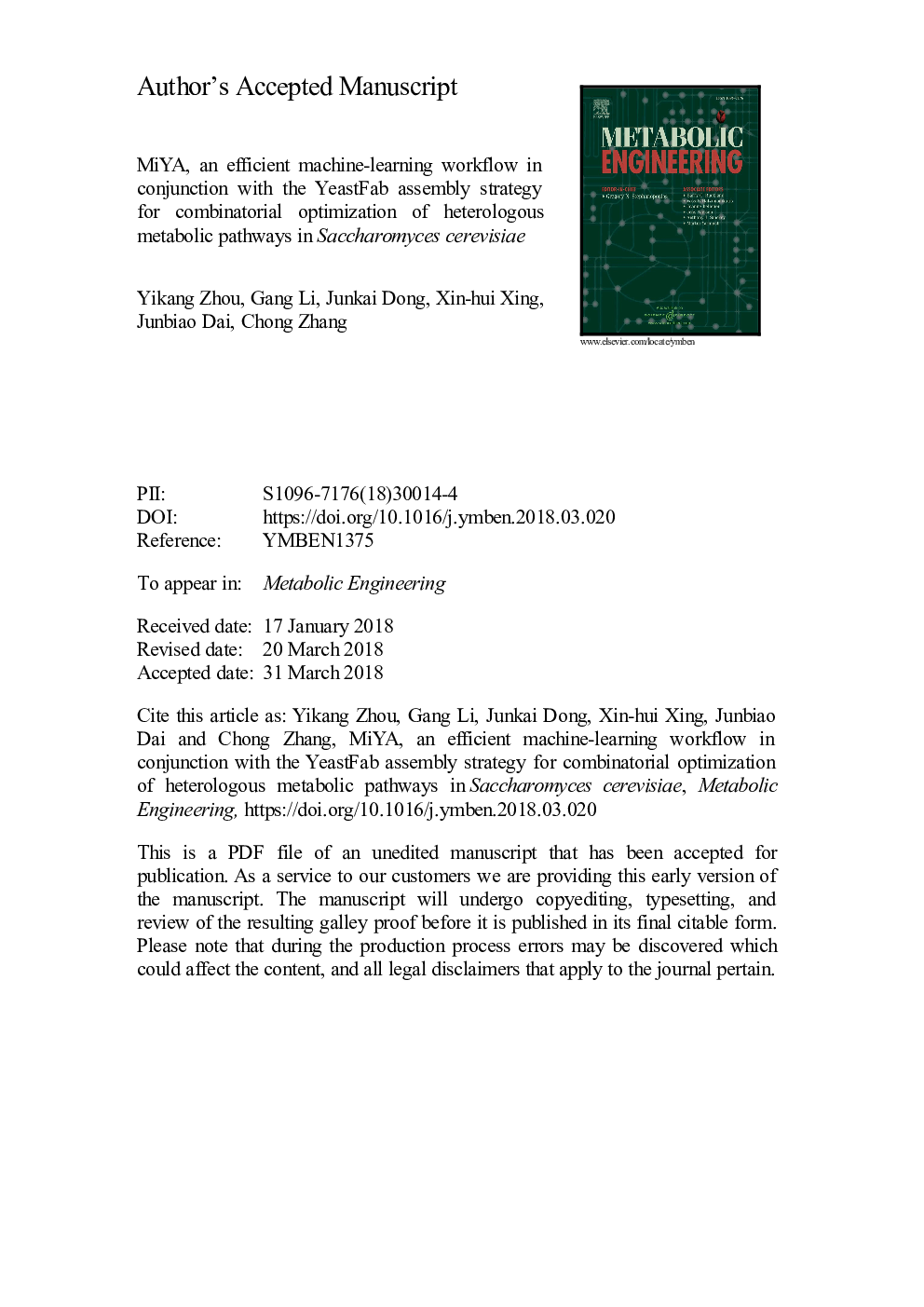| Article ID | Journal | Published Year | Pages | File Type |
|---|---|---|---|---|
| 6494088 | Metabolic Engineering | 2018 | 39 Pages |
Abstract
Facing boosting ability to construct combinatorial metabolic pathways, how to search the metabolic sweet spot has become the rate-limiting step. We here reported an efficient Machine-learning workflow in conjunction with YeastFab Assembly strategy (MiYA) for combinatorial optimizing the large biosynthetic genotypic space of heterologous metabolic pathways in Saccharomyces cerevisiae. Using β-carotene biosynthetic pathway as example, we first demonstrated that MiYA has the power to search only a small fraction (2-5%) of combinatorial space to precisely tune the expression level of each gene with a machine-learning algorithm of an artificial neural network (ANN) ensemble to avoid over-fitting problem when dealing with a small number of training samples. We then applied MiYA to improve the biosynthesis of violacein. Feed with initial data from a colorimetric plate-based, pre-screened pool of 24 strains producing violacein, MiYA successfully predicted, and verified experimentally, the existence of a strain that showed a 2.42-fold titer improvement in violacein production among 3125 possible designs. Furthermore, MiYA was able to largely avoid the branch pathway of violacein biosynthesis that makes deoxyviolacein, and produces very pure violacein. Together, MiYA combines the advantages of standardized building blocks and machine learning to accelerate the Design-Build-Test-Learn (DBTL) cycle for combinatorial optimization of metabolic pathways, which could significantly accelerate the development of microbial cell factories.
Related Topics
Physical Sciences and Engineering
Chemical Engineering
Bioengineering
Authors
Yikang Zhou, Gang Li, Junkai Dong, Xin-hui Xing, Junbiao Dai, Chong Zhang,
